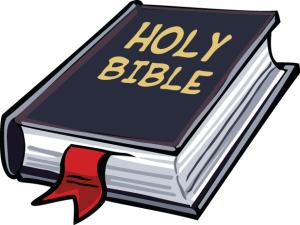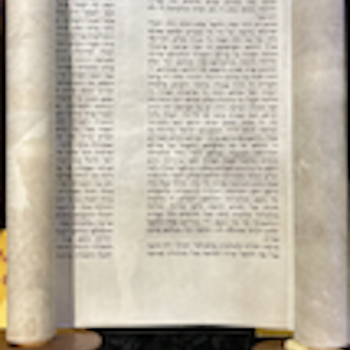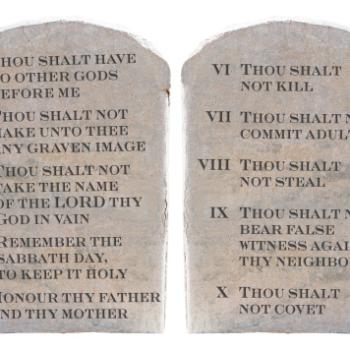 The transmission of the Christian Bible is by far the most studied literary occupation ever undertaken in world history. Nothing else in literature even compares to this most intense endeavor, which involves a recovery process from extant, ancient manuscripts.
The transmission of the Christian Bible is by far the most studied literary occupation ever undertaken in world history. Nothing else in literature even compares to this most intense endeavor, which involves a recovery process from extant, ancient manuscripts.
The Christian Bible consists of two parts: the Old Testament, which scholars call the Jewish Bible, and the New Testament. All of the Jewish Bible originally was written in the Hebrew language accept for Daniel 2–7, which was written in Aramaic. All New Testament documents originally were written in the Greek language, although there are a bare few scholars who have thought the Gospel of Matthew originally was written in Hebrew or Aramaic, which is a sister language of Hebrew.
The New Testament begins with four gospels: Matthew, Mark, Luke, and John, all in this order. The first three are distinguished from John by being called “the synoptic gospels.” These four gospels tell about the life of Jesus of Nazareth, mostly about his itinerant public ministry, then Passion Week, which includes his death on a cross, and his resurrection from the dead on the third day.
Prior to the invention of the printing press by Johannes Gutenberg in 1453, the transmission of biblical documents occurred just like any other important documents–copying by hand. Thus, it was necessary to have an actual profession that did this, called “the scribal profession.” Scribes therefore made themselves skilled in copying documents that were important to societies and therefore important to preserve them. Such was the case of the Christian church in preserving its New Testament documents, especially its first four gospels.
Throughout the Common Era, Christians preserved many copies and fragments of portions of the New Testament gospels which still exist today. Scholars who meticulously study these handwritten, gospel remains are called “textual critics.” The best textual critics often have been involved in compiling a gospel of Matthew, Mark, or Luke in the ancient Greek language, called “koine Greek,” which means “common Greek.” That was the language normally spoken in the eastern portion of the Roman empire during the time of Jesus since Hellenism was so pervasive there. Latin was the common language then in the western branch of the Roman empire.
Church father Jerome and his associates compiled the New Testament in Latin, called the Vulgate, during the fifth century CE. It became the Bible of the Latin world for the next thousand years. It, of course, was translated into other languages in various countries.
Erasmus, a Dutch philosopher and Roman Catholic theologian, was the first to compile a Greek New Testament in medieval times based on ancient Greek manuscripts. Called Textus Receptus, which is Latin and means “received text,” it was published in 1516. Germany’s Martin Luther began the Protestant Reformation the next year, in 1517.
Textus Receptus, of course, was translated into many languages. The King James Version of the Bible was published in 1611, and its New Testament was translated from Textus Receptus. But it is important to know that Erasmus only had six ancient Greek manuscripts that he used in compiling his Textus Receptus. Since the time it was published, in 1516, thousands of ancient Greek manuscripts of New Testament documents, or portions thereof, were discovered.
Thus, for more than the past century, textual critics who have compiled Greek New Testaments have had access to over 5,000 ancient Greek manuscripts of the New Testament or portions of it. The most complete and reliable Greek New Testament is in Codex Vaticanus, produced in the fourth century and housed in the Vatican since the 15th century. But its importance was not understood until its complete transcription in the 19th century, when it was realized that there were significant differences between it and Textus Receptus. That is the main reason why Westcott and Hort produced their Greek New Testament in 1881. It started the production of many modern versions of the Bible that we have today, whether in English or other languages, which more accurately preserve the original New Testament writings.
Scribes were human and therefore subject to making mistakes. That is why it has always been important to study the differences between ancient biblical manuscripts, which differences are called “variants.” For nearly the past century, there have been two Greek New Testaments that translators have used for their translations of the Bible: 28th edition of the Nestle-Aland [formerly Nestle] Greek New Testament and the 5th edition of the United Societies’ Greek New Testament. Both of these editions now are completely the same, so that they do not disagree about any variants in the ancient manuscript tradition.
When scribes used to copy the New Testament gospels, they sometimes did what is called “harmonization.” (My first book is a single-narrative harmony of the four New Testament gospels entitled The Gospels Interwoven [1887].) They did this purposely or inadvertently. If purposely, it was usually because they recalled another way it was written in another manuscript or another gospel manuscript. Thus, they rarely harmonized because they thought their exemplar from which they copied had an error.
A new and important scholarly book regarding scribal harmonization of the New Testament gospels was published by Brill in Leiden, Netherlands, in 2019. Written by by New Testament textual critic Camby G. Pardee, it is entitled Scribal Harmonization in the Synoptic Gospels. Larry Hurtado reviewed this book, which I just read. (I knew Larry.) The following are some quotes of Hurtado’s review of Pardee’s book:
- Hurtado defines “harmonization” as “the influence of one gospel upon the text of another” in the scribal transmission process. Copyist harmonization is often understood to mean the intentional effort to reduce textual differences between manuscripts. But according to Pardee, it appears that this rarely ever happened.
- “Most harmonized readings appear to have been ‘accidental’ or ‘unconscious,’ or, in Pardee’s preferred term, ‘reflexive,’ he proposes that they resulted from copyists being aware of the reading of a gospel text beyond the one they copied, the copyist more influenced by the other text than deliberately trying to draw upon it.”
- “As for the types of harmonizations, they are mainly differences of one word, which Pardee contends shows that harmonization was rarely deliberate and also not a systematic activity but instead was occasional.”
- “Harmonizing variants are, generally, not frequent in the earliest centuries.”
- Hurtado quotes Pardee saying, “there was no general editorial agenda among scribes to harmonize one Gospel to another.”
- Concerning Codex Vaticanus, Hurtado quotes Pardee saying it is “arguably the most important Greek manuscript of the Bible extant today.”
In conclusion, the more I learn about the transmission of especially the New Testament gospels which concern the life, death, and resurrection of Jesus, the more trustworthy I find those documents to be.













